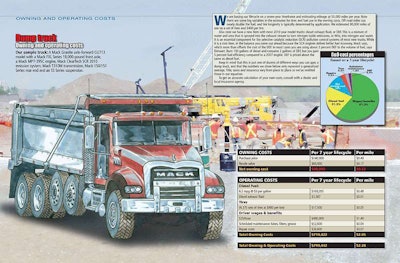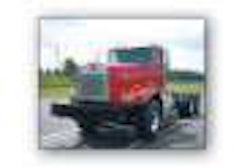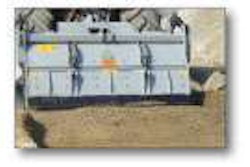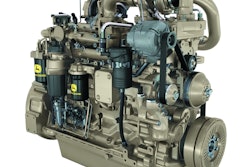The three-axle dump truck is as integral to construction jobsites as any piece of yellow iron or paving equipment. But unlike off-road equipment, which has seen a number of small, incremental improvements over the past few years, Class 8 dump trucks have enjoyed significant technological progress. Things like engines that can go up to a million miles, automatic transmissions and an ever expanding range of options have had a major impact on the long term operating costs of these workhorses.
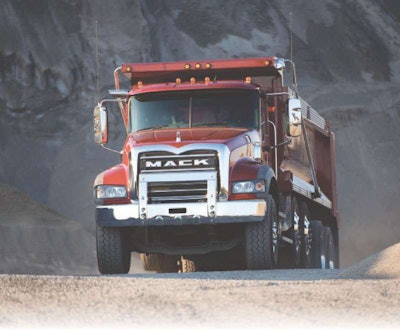
To help us detail what might be considered an average truck we worked with Curtis Dorwart, vocational marking product manager for Mack Trucks. He suggested we use the Mack Granite axle-forward GU713 model with a Mack FXL series 18,000-pound front axle, Mack 310M transmission, Mack MP7-395C engine and Mack 150/151 series rear end. Dorwart notes this same truck can also be spec’ed with Dana Spicer and Meritor axles, which emphasizes our point about the number of options available.
Long-lived trucks
“Today they’re not doing an overhaul at 100,000 miles like they were many years back,” Dorwart says. “These days with EPA emissions regulations and high-tech engines the expectation is for longevity, so we have to put out as robust a product as possible to meet the expectation of a seven- to 10-year retention cycle,” he says.
While the operating costs of yellow iron go up significantly for things like undercarriage rebuilds, the majority of long-term repair items on dump trucks are mostly nickel and dime. “These days you’re going to get a lot out of the motor, transmission and rear end too,” Dorwart says. “Usually what it comes down to are things like suspension components wearing out, rubber bushings, worn kingpins, torque rods, cracked cross-members or brackets. At seven to 10 years out, there are a lot of little things that add up and the owners may want to get out from underneath it.”
Body shots
Likewise with the truck body: over time it gets beat up. “Asphalt, gravel and gritty materials create more wear and tear,” Dorwart says. Stone and rock can also be abusive, especially if the operator dumping it into the bed is not careful or experienced.
There are a lot of contractors who are looking at aluminum dump bodies to reduce weight, Dorwart says. But aluminum is best used in less harsh applications as it doesn’t have the hardness or impact resistance of steel. Dump bodies will in most cases last the life of the truck and be repaired as needed. The hydraulic cylinders, hoses and pumps, hinge pins and the rest, get rebuilt, but this is not a big expense in the scheme of things.
Gauging lifecycle
The number of miles you might accumulate in seven to 10 years is an open ended question, Dorwart says. The average range is in the neighborhood of 50,000 to 75,000 miles per year. In applications that keep the truck in the dirt, the mileage will be lower. Trucks that spend a lot of time on pavement tend to rack up more miles per year, he says.
Dorwart also cautions that mileage may not be a good metric for gauging the life remaining in a truck used primarily off road. “In a quarry, they’re going to beat up the truck but not put a lot of miles on it,” he says. “Sometimes the hours are worse than the miles. A consistent diet of off-road articulation – the more you’re twisting the frame and beating on the springs and bushings – the faster those components will wear out.”
Fuel and tires
Aside from driver wages, fuel and tires are your biggest operating expense on a dump truck. Class 8 models will typically get around 3.2 gallons per hour for short hauls, and 6.2 mpg for highway hauling. Dorwart notes that gallons per hour might be a better metric to use off-road especially if your truck is doing short hauls, building stockpiles, moving rock from the excavator to the crusher and such. Be sure to consult with your dealer before deciding which measurement is best for you.
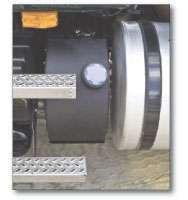 Diesel exhaust fluid or DEF, is an addition to your costs in SCR-based engines, but in the long run the cost just about zeroes out thanks to fuel economy gains, Mack says.
Diesel exhaust fluid or DEF, is an addition to your costs in SCR-based engines, but in the long run the cost just about zeroes out thanks to fuel economy gains, Mack says.Tires can cost anywhere from $400 to $1,000 each. But $400 per is a good average number and that would cover drive and steer tires (10 total tires on a three-axle truck.). Tire replacement schedules are harder to pinpoint. Off-road hazards and conditions can cause tires to fail before the tread wears out. Some companies use retreads to keep their tire costs low.
We pegged tire life at an average of 80,000 miles, but for discussion purposes only. Given the high cost of this element in the equation you should definitely have hard numbers based on prior experience to plug into your own O&O equations. If you don’t already have a tire cost management program, talk to your tire vendor about setting one up. Many offer software programs that can nail your annual costs to the penny.
Making it last
The skill and experience of your drivers has a big influence on the operating costs of your trucks. A good driver, especially in on-highway applications, can influence your fuel economy by as much as a third, Dorwart says.
Maintenance, particularly the small and daily items, also plays a role. One of the worst things you can do is ignore the daily inspection, Dorwart says. Not taking care of something early when it’s inexpensive will only cause the cost to grow.
Dorwart’s final advice is to be sure to find a dealer who can help you spec the truck accurately for your needs. “Explain to your dealer what you’re doing with the truck, how long you’re going to keep it, what you’re hauling, how many miles on or off road, how fast you want to go on highway, how far you go between pickups. If he’s not asking those types of questions, you might want to go someplace else. Find a guy who can optimize the truck for you.”
